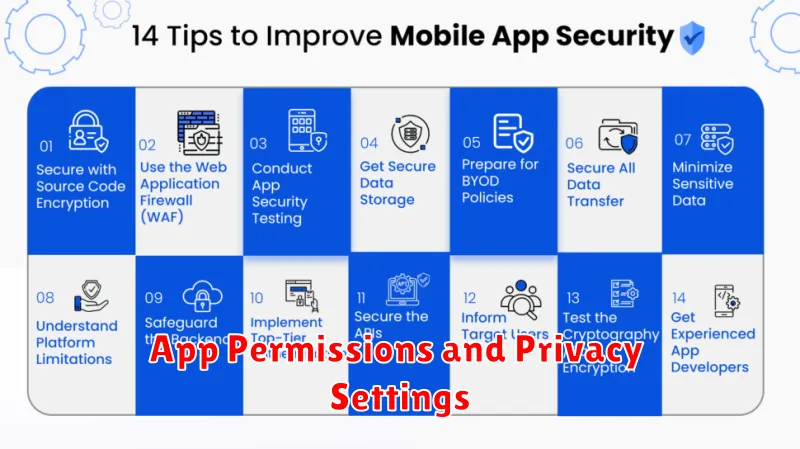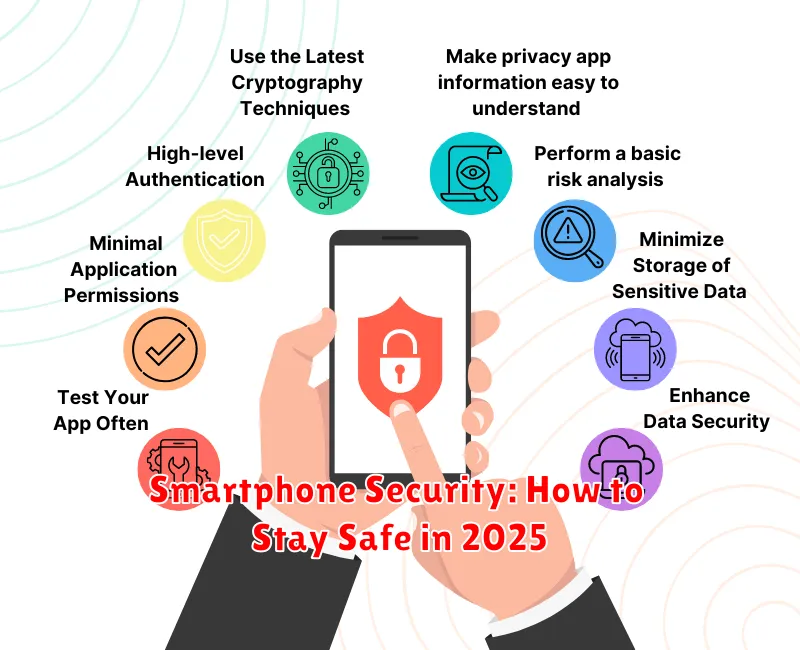In today’s interconnected world, smartphone security is paramount. Our smartphones hold a vast amount of personal information, from financial details to private conversations, making them prime targets for cybercriminals. With the ever-evolving landscape of digital threats projected for 2025 and beyond, understanding how to protect your device and data is more crucial than ever. This article will delve into the essential aspects of smartphone security, providing practical advice and actionable steps to ensure your mobile experience remains safe and secure in the coming years. We will cover topics ranging from advanced authentication methods and robust password management to recognizing and avoiding phishing scams and other common mobile threats.
Navigating the complexities of mobile security can be daunting, but by implementing the strategies outlined in this guide, you can significantly reduce your risk. We’ll explore the latest security features available on modern smartphones and discuss best practices for maximizing their effectiveness. From leveraging biometric authentication like fingerprint and facial recognition to employing mobile device management (MDM) solutions, we’ll equip you with the knowledge and tools to stay ahead of emerging security threats in 2025. Whether you’re concerned about data breaches, malware, or simply want to enhance your overall smartphone security posture, this article offers valuable insights for users of all technical levels.
Common Mobile Security Risks
Staying safe on your smartphone requires understanding the various threats present in the mobile landscape. Malware remains a significant concern, capable of stealing data, controlling your device, and disrupting functionality. Phishing attacks target mobile users through deceptive messages and websites, aiming to steal credentials and financial information.
Unsecured Wi-Fi networks pose a risk, allowing attackers to intercept data transmitted over the connection. Similarly, outdated operating systems and apps contain vulnerabilities that attackers can exploit. Finally, physical device loss or theft can compromise your data if proper security measures aren’t in place, such as strong passcodes and device encryption.
Using Biometric Authentication
Biometric authentication offers a convenient and secure way to protect your smartphone. By utilizing unique physical characteristics, it adds an extra layer of defense against unauthorized access.
Common biometric methods include fingerprint scanning, facial recognition, and iris scanning. These methods offer varying levels of security and convenience. Fingerprint scanning is widely available and generally reliable. Facial recognition offers hands-free unlocking, but its security can depend on implementation. Iris scanning provides high accuracy but is less common.
When enabling biometric authentication, consider its limitations. Some methods can be susceptible to spoofing attempts, especially if not implemented correctly. Ensure your device’s software is up-to-date to benefit from the latest security enhancements. Remember that biometric data is sensitive. Be aware of how and where your biometric data is stored and used.
App Permissions and Privacy Settings

Managing app permissions is crucial for maintaining your smartphone’s security. Apps often request access to various features and data on your device, such as your camera, microphone, contacts, and location. Granting unnecessary permissions can compromise your privacy and security.
Before granting any permission, carefully consider whether the app legitimately needs it. A weather app, for instance, likely doesn’t need access to your contacts. Review and manage permissions regularly within your device’s settings. Most operating systems allow you to revoke permissions individually for each app.
Additionally, pay close attention to the privacy settings within each app. These settings control how the app collects, uses, and shares your data. Be proactive in adjusting these settings to align with your comfort level.
Avoiding Suspicious Wi-Fi Networks
In the increasingly connected world of 2025, public Wi-Fi is ubiquitous. However, connecting to an unsecured or suspicious network can expose your smartphone to significant risks. Cybercriminals often set up fake Wi-Fi hotspots to intercept data.
Exercise caution when choosing a network. Avoid networks with generic names like “Free Wi-Fi” or those that don’t require a password. Verify the network name with the establishment providing it. If in doubt, ask a staff member.
When using public Wi-Fi, limit sensitive activities like online banking or shopping. Utilize a Virtual Private Network (VPN) to encrypt your data and protect your privacy. This adds a layer of security, shielding your information from potential threats.
Securing Cloud Backups
Cloud backups are crucial for protecting your smartphone data. However, ensuring these backups are secure is equally important. Choose a reputable cloud provider that offers strong encryption, both in transit and at rest.
Enable two-factor authentication (2FA) for your cloud account. This adds an extra layer of security, making it significantly more difficult for unauthorized access. Regularly review the security settings of your chosen cloud service and ensure they align with your security needs.
Be mindful of what data you are backing up. Sensitive information might require additional security measures. Consider using a separate, more secure cloud service or encrypting specific files before uploading them.
Best Security Apps to Install
Choosing the right security apps is crucial for comprehensive smartphone protection. Antivirus apps form the first line of defense against malware, while VPN services encrypt your internet traffic, shielding your data on public Wi-Fi. Password managers simplify secure password creation and storage, reducing vulnerability to credential theft.
Beyond these core apps, consider adding an anti-theft app to locate or remotely wipe your device if lost or stolen. A firewall app can provide granular control over network access for individual apps, further enhancing security. Carefully evaluate user reviews and features to select apps that best meet your specific security needs.
Keeping OS and Apps Updated
One of the most critical aspects of smartphone security is keeping your operating system (OS) and applications updated. Updates often include vital security patches that address known vulnerabilities. Failing to update your software leaves your device susceptible to malware and other threats.
Enable automatic updates whenever possible. This ensures you receive the latest security enhancements as soon as they become available. For apps, regularly check for updates through your device’s app store. Review the permissions requested by updated apps to ensure they align with your expectations.

